 |
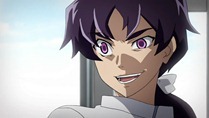 |
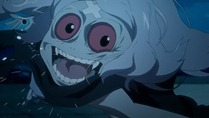 |
In the midst of so many new series of note, one more wistful goodbye…
I love Mirai Nikki, and watching an anime of a series you love is always a scary prospect. As odd a series as this is, I really wasn’t sure how it would make the transition to anime. It’s highly visual, even in manga form, and full of non-stop action and suspense. So on paper (no pun intended) it seemed like a natural fit. But it’s also a highly individualistic series that reflects the very peculiar narrative style of its author, and I worried that somehow Esuno-sensei’s magic would be lost in translation. As to studio, Asread wasn’t my first preference but neither did that fill me with dread. As always, the choice of writer and director is more important than the studio, and things seemed to be in pretty good shape there.
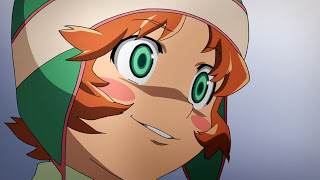 In the final analysis the most important question for me as a manga reader is, am I happy with the adaptation? And the answer is a resounding “yes”. There are things I would have done differently, but taken as a whole I think this was a resounding success (and hopefully the “Next Project” means it indeed was). There are many things that were flat-out better in the anime version – for example, the character of Ninth, Uryuu Minene, as voiced by Aizawa Mai. I always liked Minene, but a good manga character became a great anime character, stealing virtually every scene she was in (and way to go, getting a “Good End”). Among the many nods to Evangelion in this series, the anime Ninth felt a lot like Misato Katsuragi to Yukiteru’s Shinji Ikari. It could easily be argued that she had the most comprehensive arc of any of the characters in the series, or at least that it was on a par with Yukiteru’s. When things started to spiral out of control Minene was a splash of cold water in the face, a no BS dose of common sense from her skewed perspective. She was great.
In the final analysis the most important question for me as a manga reader is, am I happy with the adaptation? And the answer is a resounding “yes”. There are things I would have done differently, but taken as a whole I think this was a resounding success (and hopefully the “Next Project” means it indeed was). There are many things that were flat-out better in the anime version – for example, the character of Ninth, Uryuu Minene, as voiced by Aizawa Mai. I always liked Minene, but a good manga character became a great anime character, stealing virtually every scene she was in (and way to go, getting a “Good End”). Among the many nods to Evangelion in this series, the anime Ninth felt a lot like Misato Katsuragi to Yukiteru’s Shinji Ikari. It could easily be argued that she had the most comprehensive arc of any of the characters in the series, or at least that it was on a par with Yukiteru’s. When things started to spiral out of control Minene was a splash of cold water in the face, a no BS dose of common sense from her skewed perspective. She was great.
 I think Esuno, from the beginning, wanted to make Mirai Nikki a deconstruction of the tropes that pervade anime – taking all the things otaku love and others complain about and making them the center of his story. The magical girlfriend (except this one is a psychotic killer), the deux ex machina, dead characters reborn, alternate worlds, body doubles – effectively, Esuno took the shark, stuck a leather jacket on it and put it on a motorcycle. And the means he chose to explore this idea with was a kind of re-imagining of NGE – a look at morose and self-absorbed adolescence, taken to it’s karmic and practical extreme. This became even more apparent in the anime via the clever use of Togashi Misuzu’s very Ogata Megumi-like (she played Shinji) performance, and pairing it with Ishida Akira as Akise. If Minene filled the Misato role Akise certainly filled the Kaoru one, and this is another example of how the anime was able to cleverly take something that was subtle in the manga and make it that much more alive.
I think Esuno, from the beginning, wanted to make Mirai Nikki a deconstruction of the tropes that pervade anime – taking all the things otaku love and others complain about and making them the center of his story. The magical girlfriend (except this one is a psychotic killer), the deux ex machina, dead characters reborn, alternate worlds, body doubles – effectively, Esuno took the shark, stuck a leather jacket on it and put it on a motorcycle. And the means he chose to explore this idea with was a kind of re-imagining of NGE – a look at morose and self-absorbed adolescence, taken to it’s karmic and practical extreme. This became even more apparent in the anime via the clever use of Togashi Misuzu’s very Ogata Megumi-like (she played Shinji) performance, and pairing it with Ishida Akira as Akise. If Minene filled the Misato role Akise certainly filled the Kaoru one, and this is another example of how the anime was able to cleverly take something that was subtle in the manga and make it that much more alive.
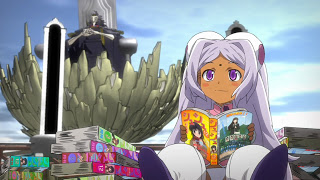 I’m not going to say this series was a technical masterpiece, or that Asread is a studio to rival P.A. Works or Production I.G. with their lavish animation. But for this trashy, absurdist comic book come to life, they may just have been the right choice. What the animation lacked in fluidity and detail it made up for with wit and style, creating a look that was both faithful to the manga and uniquely its own. More importantly, Hosoda and writer Takayama Katsuhiko made unconventional but ultimately brilliant decisions with regards to pacing, flying through the middle sections of the manga and giving them a breathless, exhilarating quality while in the process saving themselves enough time to slow down and really savor the last arc. Those middle sections are best reacted to rather than analyzed, a visceral rather than a cerebral experience – while the final arc is more emotional, and demands to be considered and made sense of both emotionally and intellectually. It would have been easier to adapt the manga at a consistent clip – 59 chapters divided by 26 episodes – but it would have been wrong, and I’m glad the creative staff were smart enough to realize that.
I’m not going to say this series was a technical masterpiece, or that Asread is a studio to rival P.A. Works or Production I.G. with their lavish animation. But for this trashy, absurdist comic book come to life, they may just have been the right choice. What the animation lacked in fluidity and detail it made up for with wit and style, creating a look that was both faithful to the manga and uniquely its own. More importantly, Hosoda and writer Takayama Katsuhiko made unconventional but ultimately brilliant decisions with regards to pacing, flying through the middle sections of the manga and giving them a breathless, exhilarating quality while in the process saving themselves enough time to slow down and really savor the last arc. Those middle sections are best reacted to rather than analyzed, a visceral rather than a cerebral experience – while the final arc is more emotional, and demands to be considered and made sense of both emotionally and intellectually. It would have been easier to adapt the manga at a consistent clip – 59 chapters divided by 26 episodes – but it would have been wrong, and I’m glad the creative staff were smart enough to realize that.
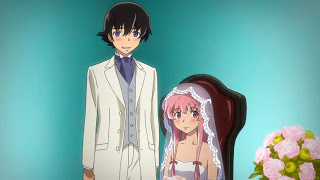 I suspected going in that Mirai Nikki would be a divisive show, among those who haven’t read the manga especially, and I think that’s turned out to be true. It’s all about taking the series as I think the author intended, and the things you most often hear about – namely, plot holes and Yukiteru’s personality – are exactly the point. Those aren’t plot holes, that’s the plot – and it’s Yukiteru’s loneliness, timidity and lack of self-confidence that drives the entire story. He’s probably not a self-projection to the extent that Shinji was for Anno Hideki, but more an everyman (everyboy) – someone who longs for nothing more exciting than to be normal, who reacts as any normal boy would when things spiral more and more out of his control. Mirai Nikki is the story of Yukiteru’s attempt – and failure, and ultimately success – at trying to be a decent human being in an indecent world. It’s taken to ridiculous extremes, but surely symbolic of the struggle we face in own lives, especially during those years when we’re trying to decide who we want to be.
I suspected going in that Mirai Nikki would be a divisive show, among those who haven’t read the manga especially, and I think that’s turned out to be true. It’s all about taking the series as I think the author intended, and the things you most often hear about – namely, plot holes and Yukiteru’s personality – are exactly the point. Those aren’t plot holes, that’s the plot – and it’s Yukiteru’s loneliness, timidity and lack of self-confidence that drives the entire story. He’s probably not a self-projection to the extent that Shinji was for Anno Hideki, but more an everyman (everyboy) – someone who longs for nothing more exciting than to be normal, who reacts as any normal boy would when things spiral more and more out of his control. Mirai Nikki is the story of Yukiteru’s attempt – and failure, and ultimately success – at trying to be a decent human being in an indecent world. It’s taken to ridiculous extremes, but surely symbolic of the struggle we face in own lives, especially during those years when we’re trying to decide who we want to be.
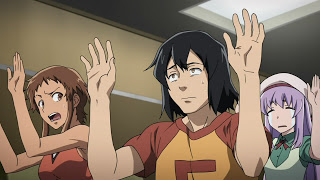 I don’t think I need to say much more about Yuno, because it’s surely all been said by now. She’s a brilliant and bizarre construction, just as Mirai Nikki is – there’s nothing else quite like either of them. If Yukiteru is the urge for normalcy, Yuno is the living embodiment of extremity. She’s pure emotion, with every one of them outsized to the point of disorder. Yuno is “what happens when” – when self-assuredness is unchecked by humility. When love is unchecked by realism. When determination is unchecked by restraint. She’s a gun with no safety, a supercar with no brakes. Every boy probably worries about losing control of their life when they enter into the world of relationships with girls, and Yuno is that worry given form – the best and the worst the adolescent imagination can muster (and that’s a lot). Like so much else about this series, she’s the trope intentionally magnified and put at the heart of the story. It’s not a choice many authors would have thought of, or made even if they had.
I don’t think I need to say much more about Yuno, because it’s surely all been said by now. She’s a brilliant and bizarre construction, just as Mirai Nikki is – there’s nothing else quite like either of them. If Yukiteru is the urge for normalcy, Yuno is the living embodiment of extremity. She’s pure emotion, with every one of them outsized to the point of disorder. Yuno is “what happens when” – when self-assuredness is unchecked by humility. When love is unchecked by realism. When determination is unchecked by restraint. She’s a gun with no safety, a supercar with no brakes. Every boy probably worries about losing control of their life when they enter into the world of relationships with girls, and Yuno is that worry given form – the best and the worst the adolescent imagination can muster (and that’s a lot). Like so much else about this series, she’s the trope intentionally magnified and put at the heart of the story. It’s not a choice many authors would have thought of, or made even if they had.
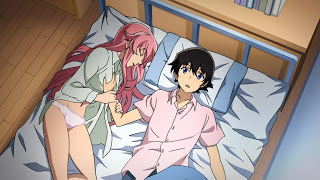 And ultimately, that points up what makes this a very successful adaptation. Asread and the creative team had the guts not to try and change what Mirai Nikki was, to make it more conventional and “broaden its appeal”. They stayed true to the unconventional, difficult, sometimes awkward and ridiculous but always inventive and visceral nature of what Esuno’s manga is. It would have been easier to cop out – to smooth the edges a little, to make the narrative more orthodox and the characters less extreme. But they were smart enough to realize that doing so would have ensured a failed adaptation, and to present Mirai Nikki in a form that was faithful to the spirit of the original. I love the manga for being bold and bizarre and wild and insane, and I love the anime for seeing those things not as flaws, but as desirable qualities and the reason why this is a great series.
And ultimately, that points up what makes this a very successful adaptation. Asread and the creative team had the guts not to try and change what Mirai Nikki was, to make it more conventional and “broaden its appeal”. They stayed true to the unconventional, difficult, sometimes awkward and ridiculous but always inventive and visceral nature of what Esuno’s manga is. It would have been easier to cop out – to smooth the edges a little, to make the narrative more orthodox and the characters less extreme. But they were smart enough to realize that doing so would have ensured a failed adaptation, and to present Mirai Nikki in a form that was faithful to the spirit of the original. I love the manga for being bold and bizarre and wild and insane, and I love the anime for seeing those things not as flaws, but as desirable qualities and the reason why this is a great series.
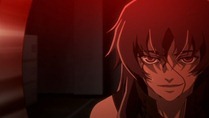 |
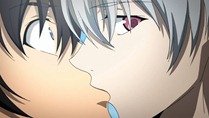 |
 |
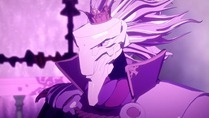 |
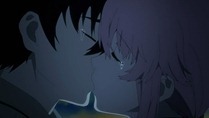 |
 |



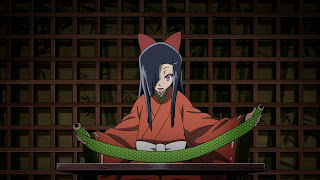


KoroshiyaKi
April 17, 2012 at 12:34 am"It would have been easier to adapt the manga at a consistent clip – 59 chapters divided by 26 episodes"
I would like to point out that they added 2 chapters from Mosiac to make that count 61 + Omakes.
Anonymous
December 11, 2012 at 11:17 pmMy compliments on this review. I finished watching the anime after the manga and I was looking for some opinions on Google. I found your review truly well written like a review should be and it's the closest review I've seen that came close to my opinion regarding the anime. I feel as if you have highlighted every aspect of the show that makes it a wonderful thrill to watch. Again, my compliments on your review.
aka. Washu! ^O^
February 11, 2013 at 8:19 amBest review, ever. I'm reading various MN reviews and blogs, and they don't get it. MN isn't a thriller, action, or romance. It's a look at the tropes that plague anime and are used like bad crutches. Yuno isn't a conventional yandere — she's a nutjob from the start of the series, and her "when she was sweet" background isn't even shown until the end of the series. They're all high school students, yet the high school is promptly blown apart early in the series. The badass Minene wears an eyepatch and talks tough, yet her diary is about RUNNING AWAY and she never wins a fight! Anime characters making wishes always ask for small things (compared to American wishes!) and we find out — well, I don't want to give too many spoilers away. (: Anyway, thanks for making me understand better why I like this trope-ridden anime so much.